Humanum Imagery
The human face, the face of the soul, is the revelation of the person. The images chosen to represent each issue of Humanum in the banner heading at the top of the page are a way of giving our journal its own "face." In a way, these images remind us that behind all our words stand real live people, and while words are a means of communication, it is hearts that truly speak.
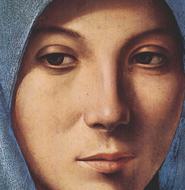
The face of the Blessed Virgin Mary on the Humanum home page is a detail taken from the Palermo Annunciation of Antonello da Messina (c. 1475). It is currently located in the National Museum in Palermo, sourced from the Yorck Project via Wikimedia Commons, and is therefore in the public domain (details).
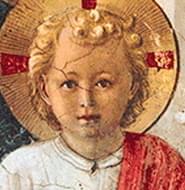
The face of the child Christ in our issue "The Child" is from Beato Angelico's Madonna Enthroned in the Museo San Marco (c. 1440). It is sourced from the Yorck Project viaWikimedia Commons, and is therefore in the public domain (details).

The face associated with our issue "Children of Divorce" is a detail from Pablo Picasso's The Tragedy, 1903. It comes from the Chester Collection at the National Gallery of Art in Washington, DC, and is also associated with the April 2012 conference of the CCPR, where the picture can be seen in full, courtesy of the National Gallery.
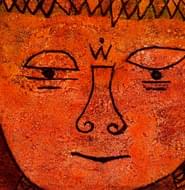
For the next issue, ART (Artificial Reproductive Technology), we chose a detail from a picture by Paul Klee called Child Consecrated to Suffering(1935). Klee, the artist of "disciplined simplicity," had recently left Germany for Switzerland, being unable to swear loyalty to the Nazi regime. He soon became ill, and died in 1940. Klee's works are in the public domain.
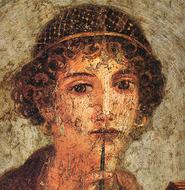
The image we have chosen for the issue on Same-Sex Unions is the supposed portrait of the Greek lyric poet Sappho, who was born around 620 BC on the island of Lesbos. The fresco was found in Pompeii, and the image is again taken from Wikimedia Commons.
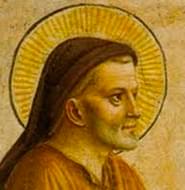
The "Absent Fathers" issue posed a challenge to find a suitable image, but we eventually settled on a picture of a father who is very present to us all – the man whom God placed as head of the Holy Family – St Joseph. Those who lack a father in this life may find one in him. Through a nice coincidence, this issue was published on the eve of St Joseph's day, and of the installation of the new Holy Father of the Church, Pope Francis I. The image is a detail from a fresco by Beato Angelico showing St Joseph at the Presentation of Our Lord in the Temple.
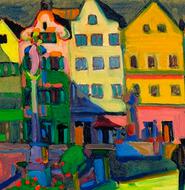
The image chosen to represent our issue on “Home and Neighborhood” is Wassily Kandinsky’s Weilheim – Marienplatz (1909). Painted during the artist’s stay in Bavaria, the painting depicts a market square in bold color. A Mariensäule (“Mary column”) draws the viewer’s eye to the left. In many ways, this image is a visual reminder of the stark contrast between a “walkable” and livable town with mixed-use development and the compartmentalized, car-dependent sprawling suburb many of us are familiar with.
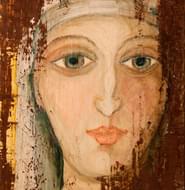
The Summer 2013 issue is on the theme of TECHNOLOGY IN THE HOME. The image chosen is a modern painting (source unknown) of St Clare of Assisi, the friend and disciple of St Francis, and foundress of the Order of Poor Clares, part of the Franciscan family. The reaon for the choice is this, although it may seem rather whimsical. Late in her life, ill in bed, St Clare was unable to attend Mass. God granted her a remote vision of it on the wall of her room, and through this she was more easily able to participate spiritually. The result was that, many centuries later in 1958, she was made the patron saint of television by Pope Pius XII.
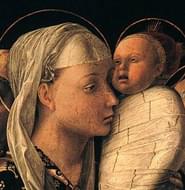
For the "Mother's Work" issue (Spring 2013), the first of a series of four issues on the theme of HOME AND FAMILY, we chose a detail from a beautiful painting of Mary and Jesus at the Presentation at the Temple by Andrea Mantegna, dated sometime in the 1450s. The image speaks for itself, and the complete painting can be seen HERE. It is thought to have inspired a very similar work by Mantegna's brother-in-law Giovanni Bellini.
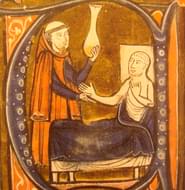
In Fall 2013 (though the issue was delayed until the new year) we interrupted our regular sequence of topics to make space for a fascinating conference between the CCPR and the Mayo Clinic on CATHOLICISM AND THE FUTURE OF MEDICINE. We chose an image from a medieval illuminated manuscript showing a medieval doctor treating his patient – probably holding up and examining a bottle of urine (the examination of which still plays an important part in diagnosis today). For a view of the history of medicine see the article by the distinguished medieval historian Glenn W. Olsen.
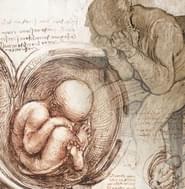
With its dual theme of the beginning and end of life, the first issue of 2014 called for two images, the child in uteropreparing for birth and the old man “on the verge of eternity.”We chose a sketch from Leonardo da Vinci’s private notebooks, one of his Studies of Embryos (1510-12), and Vincent Van Gogh’s Old Man in Sorrow (On the Threshold of Eternity) (1890). We extend our gratitude to Paige Sanchez for putting together both of these in the final design. Both images are in the public domain.
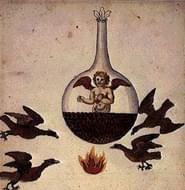
The image chosen for our conference issue on assisted reproductive technologies, RE-CONCEIVING THE HUMAN PERSON, is taken from Cabala Mineralis, a medieval manuscript on Alchemy. It depicts a homunculus being created in vitro. The image was obtained throughAnthroWiki which does not necessarily endorse the views expressed inHumanum.
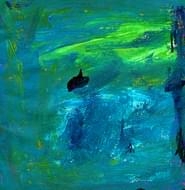
Jim Cassidy from L'Arche Ottawa in Canada painted the cover for THE ABILITY OF DISABILITY issue. The image is used with his permission.
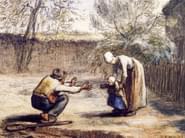
Jean-François Millet's painting, First Steps, provides the inspiration for the title of our first education issue. This touching tableau depicts both teaching and learning as it happens in the family, quite literally between a father and mother. Rights for the use of the image were purchased through Encore Editions.
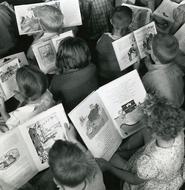
Our re-examination of "the three r's" in our second education issue took us back to the classroom and this vintage 1960s photograph of children celebrating World Book Day was a perfect fit. The image is from a collection of Health Department photos from the New Zealand Archives. It can be found on flickr and is used under the Creative Commons license.

"Hand-Holding Children on English Country Road," 1938. Used with permission, courtesy of Hulton-Deutsch Collection/CORBIS.

"Edu-tainment" starts at a young age. Originally shot in color by Philippe Put (www.ineedair.org), the photograph entitled "dora dora 2" has been cropped and changed to a black and white image. It was obtained through flickr and is used under the Creative Commons license.
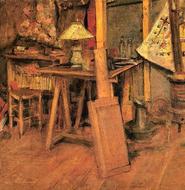
Stanisław Wyspiański (1869-1907) was a Polish playwright, poet, painter and interior and furniture designer. His love for different media--much like ArteFact's predilection for film, fiction and theatre--endeared us even more to this warm depiction of a studio in media res. Wnętrze pracowni 1 ("Studio interior 1") is in the public domain and was obtained through Wikimedia Commons.
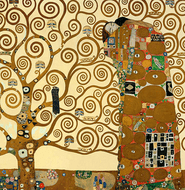
There was once a great unity between man and the world he was given. Gustav Klimt captures the peace and beauty of that moment in his "Tree of Life" (1909). This image was obtained through the Wikimedia Commons.
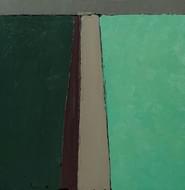
The idea of “Tilling and Keeping” comes alive in this abstract expressionist rendering of a barley field in William G. Congdon’s Campo Orzo [Barley Field]. The fields surrounding the Benedictine monastery of the Community of Sts. Peter and Paul in Lombardy, beside which Congdon lived and worked for the last 19 years of his life, became his frequent subject—one that he constantly saw anew in different seasons, shades of light and times of the year. Permission for the use of this image was generously granted by the William G. Congdon Foundation.
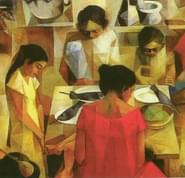
We were instantly drawn to the pacific beauty of this depiction of a shared meal by Filipino cubist painter Vicente Manansala. As editor Margaret H. McCarthy reminds us, "the home where we live is an extension of the home that we are" and, despite all the ways the world changes, breaking bread together is still the simplest and best way to welcome another. All attempts to find the owner of the rights to Prayer Before Meal proved unsuccessful. Please contact Humanum directly if you have further information—thank you.
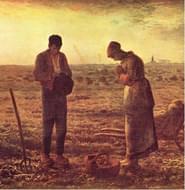
Church bells toll in the distance, calling the husband and wife to cease their toiling in order to give thanks, pray and rest briefly before they resume their work... We chose Jean-François Millet's Angelus as the cover image for our issue on work and the states of life: A Labor of Love. For, more likely than not, the toiling is at the service of the love for their children (see Peguy's contribution to this issue!).
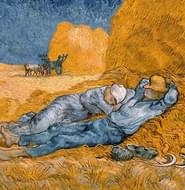
For Péguy, sleep is an act of surrendering our cares to God. How trusting then are these two souls as they nap after a morning of work both hard and fruitful (if the size of the haystacks is any indication!). Vincent van Gogh's Noon--Rest from Work (after Millet) was chosen as a fitting tribute to our issue on Good Work, Fruitful Rest. The image was sourced through Wikimedia Commons.

While the title for our issue on work and justice is biblical (Luke 10:7), our image is archival (from 1943) and was chosen because we were drawn to the quiet satisfaction in the faces of these workers on break. This detail comes from a photograph in the collection of the Länsmuseet Gävleborg in Sweden and is used under the Creative Commons license.
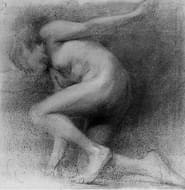
The human body speaks eloquently in a language of origin and destiny: we are born of the love of another and are called to give ourselves away in love. Slovenian artist Anton Ažbe's Kneeling Woman (Klečeč ženski akt) is an enigmatic tribute to this eloquent body of ours, as well as the cover image for the first of our four issues on the body. The image was obtained through Wikimedia Commons.